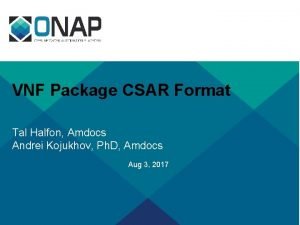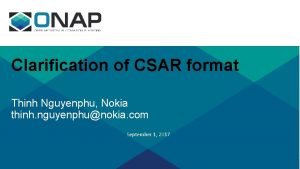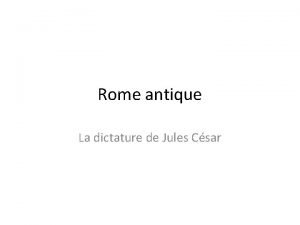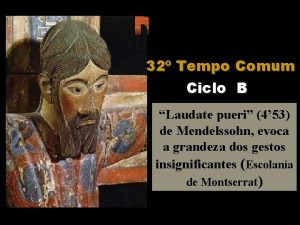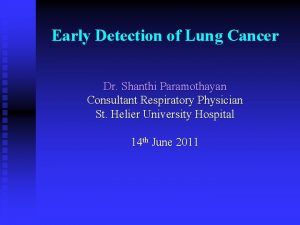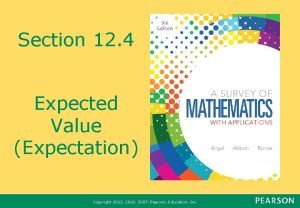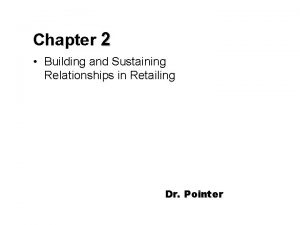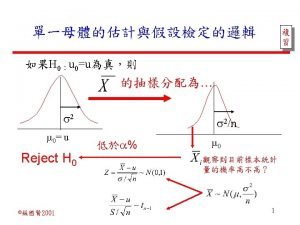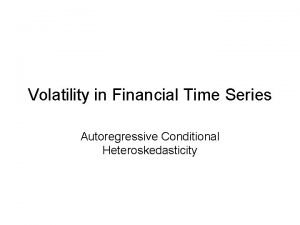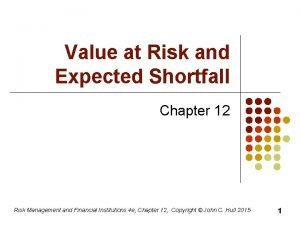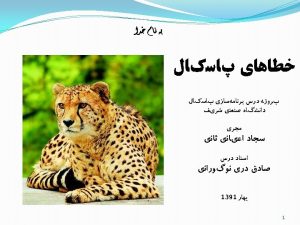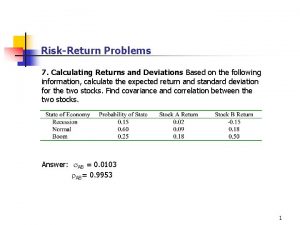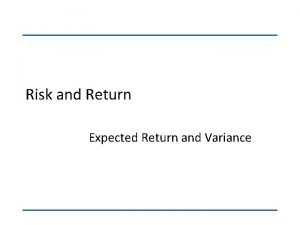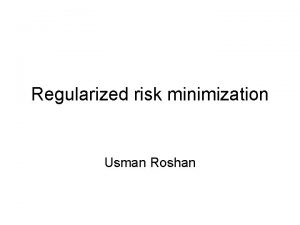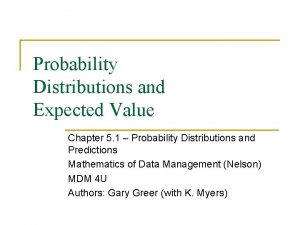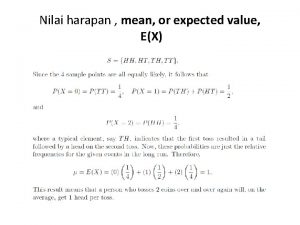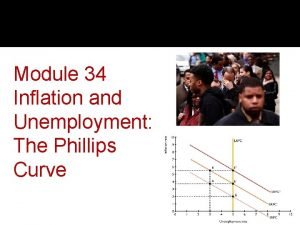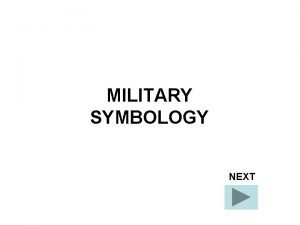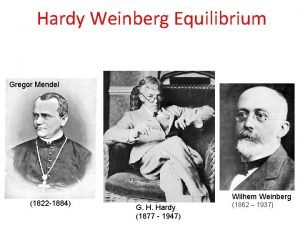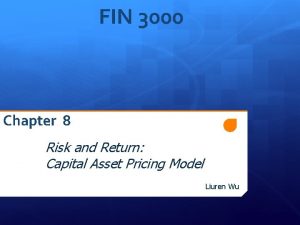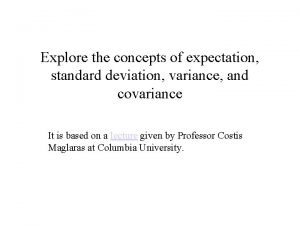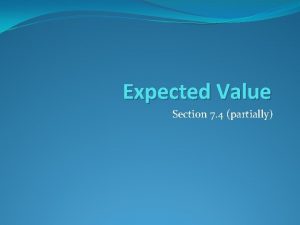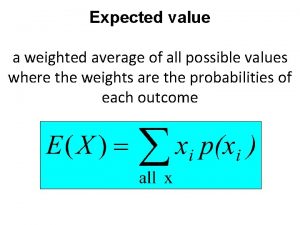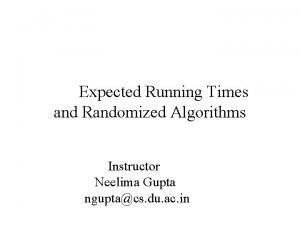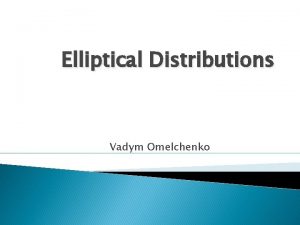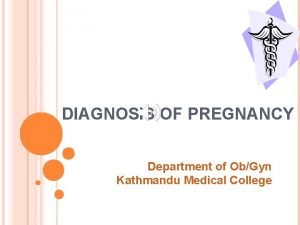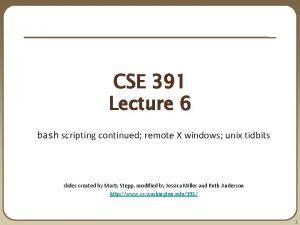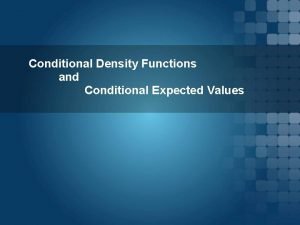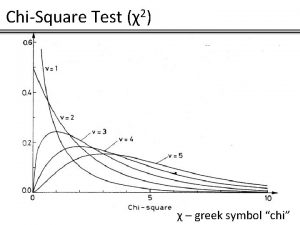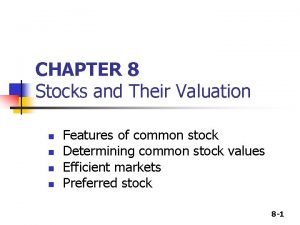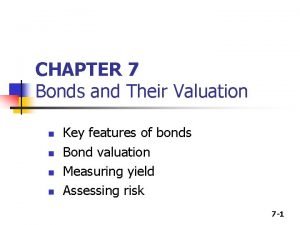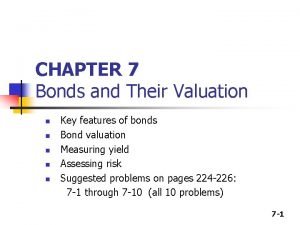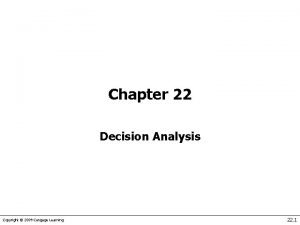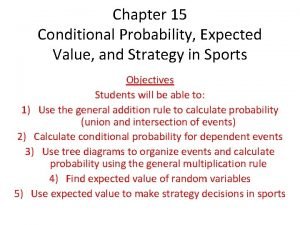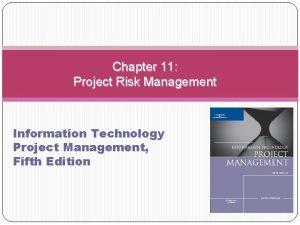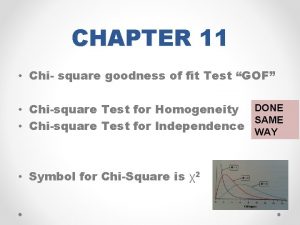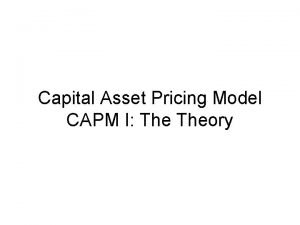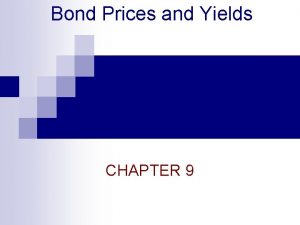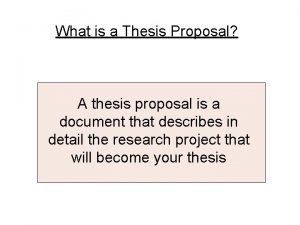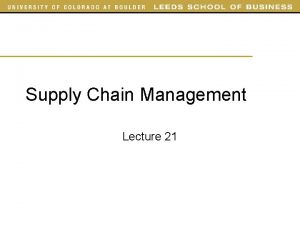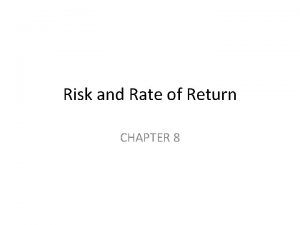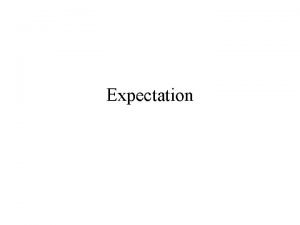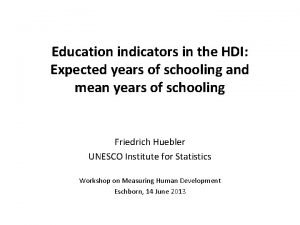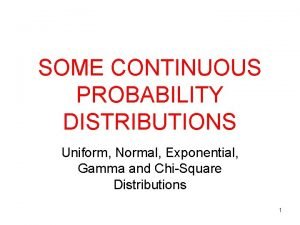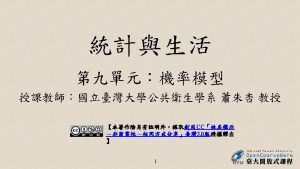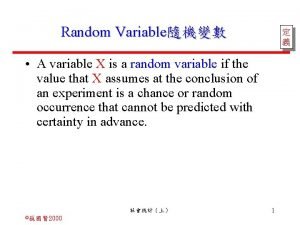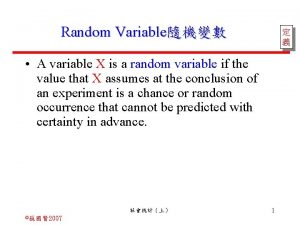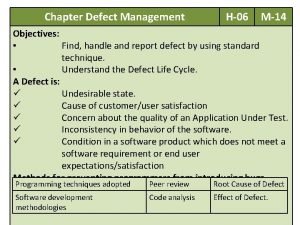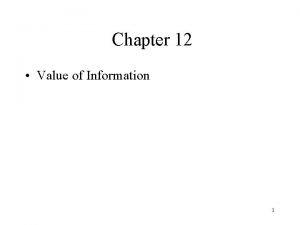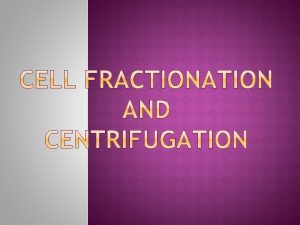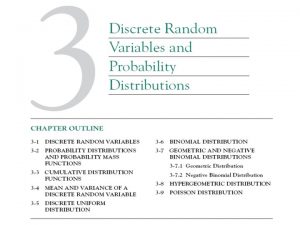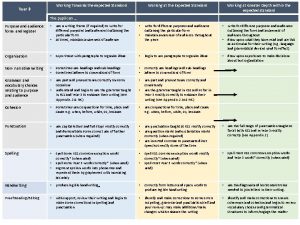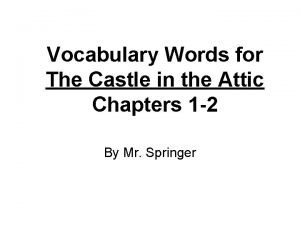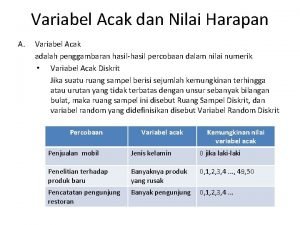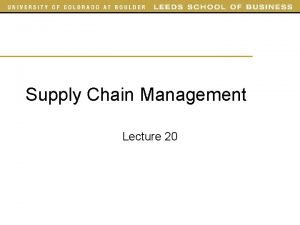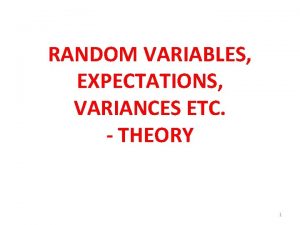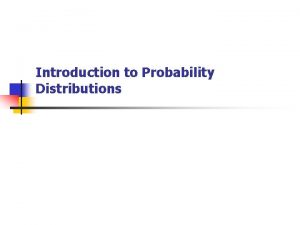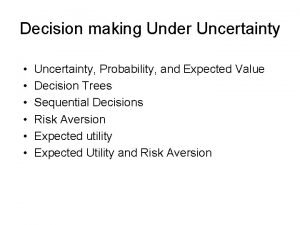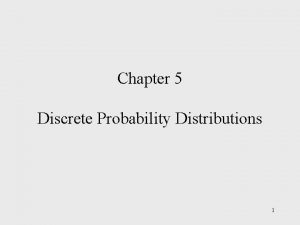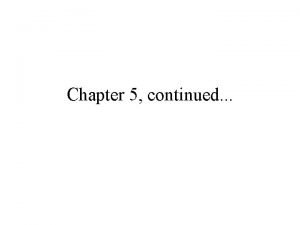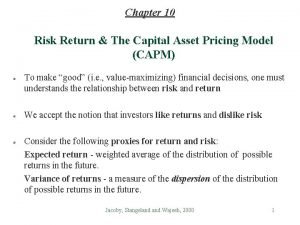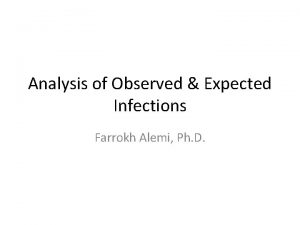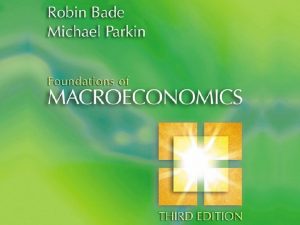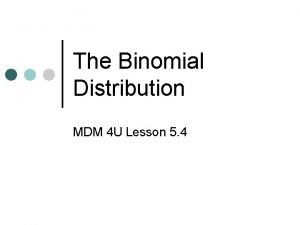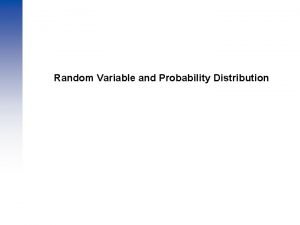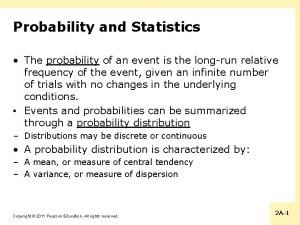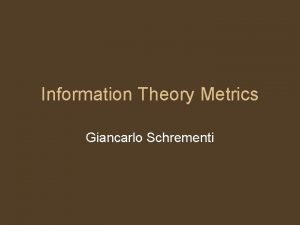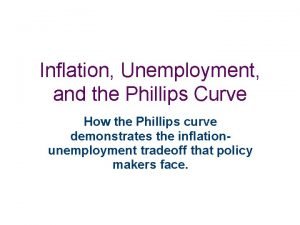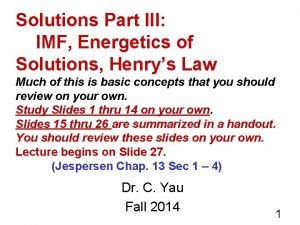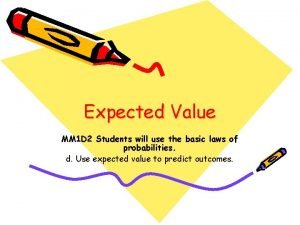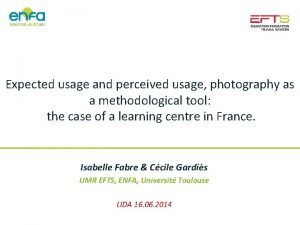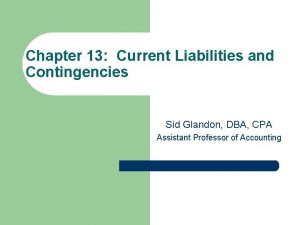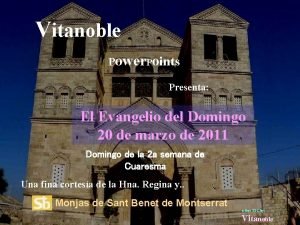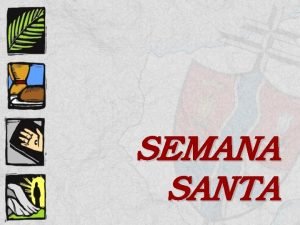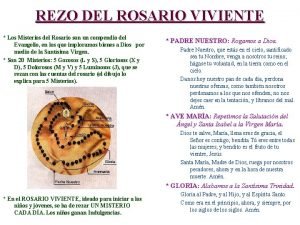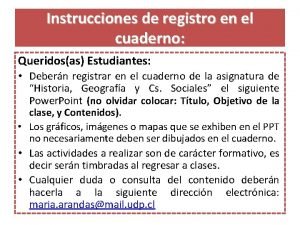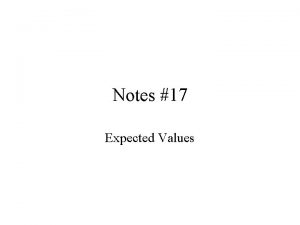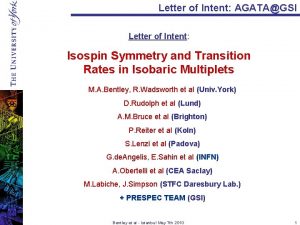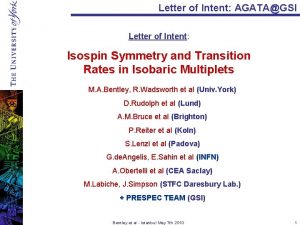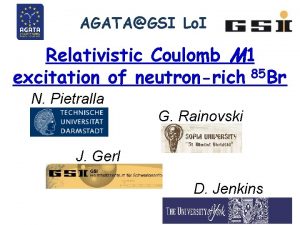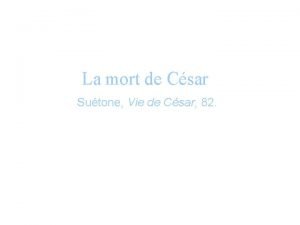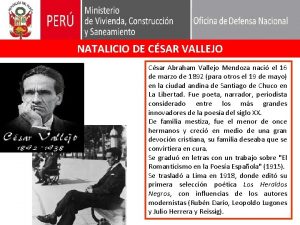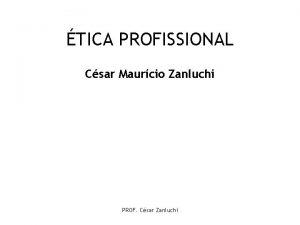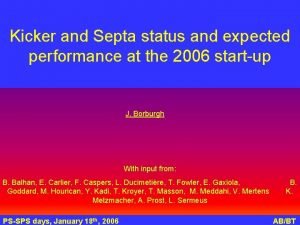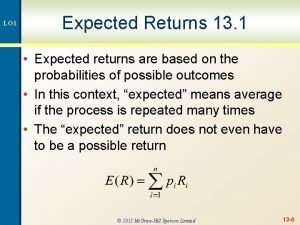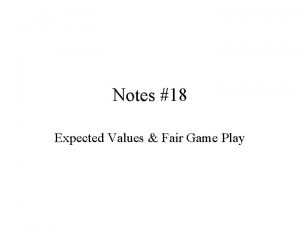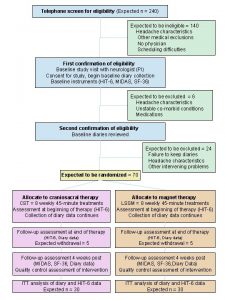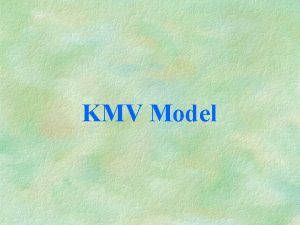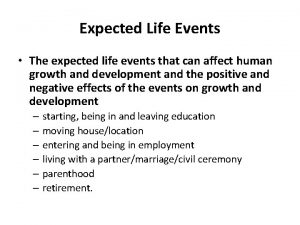Status of AGATAGSI and Expected Performance Csar Domingo








































































































































- Slides: 136

Status of AGATA@GSI and Expected Performance César Domingo Pardo GSI Helmholtzzentrum für Schwerionenforschung Gmb. H AGATA ISTANBUL WORKSHOP 5. 5. 2010

Outline • Summary of the Meeting on AGATA@GSI setup (30. 4. 2010) • AGATA Geometry for experiments at GSI FRS (PRESPEC) • Performance in terms of efficiency and resolution • Angular dependence of the g-ray efficiency for several distances • Relativistic dependence of the efficiency on • Performance vs. number of double and/or triple cluster available • Efficiency performance for pure E 2 transitions • MC Simulation of a Fragmentation experiment • MC Simulation of the line-shape for DSAM analysis • First steps towards implementation of background in the simulations • Outlook • Conclusion

Summary on the AGATA@GSI Meeting on set-up, detectors and mechanics, 30. 4. 2010 Set-up at the FRS final focal plane (S 4): RIB beam

Summary on the AGATA@GSI Meeting on set-up, detectors and mechanics, 30. 4. 2010 Set-up at the FRS final focal plane (S 4): RIB beam Chamber Sec. Target + DSSD + Plastic TOF Start

Summary on the AGATA@GSI Meeting on set-up, detectors and mechanics, 30. 4. 2010 Set-up at the FRS final focal plane (S 4): RIB beam Chamber Liquid Hydrogen Target

Summary on the AGATA@GSI Meeting on set-up, detectors and mechanics, 30. 4. 2010 Set-up at the FRS final focal plane (S 4): RIB beam Chamber Plunger + DSSD + Plastic TOF Start

Summary on the AGATA@GSI Meeting on set-up, detectors and mechanics, 30. 4. 2010 Set-up at the FRS final focal plane (S 4): RIB beam Chamber Sec. Target + DSSD + Plastic TOF Start

Summary on the AGATA@GSI Meeting on set-up, detectors and mechanics, 30. 4. 2010 Set-up at the FRS final focal plane (S 4): Products Sec. Target + DSSD + Plastic TOF Start LYCCA RIB beam Chamber

Summary on the AGATA@GSI Meeting on set-up, detectors and mechanics, 30. 4. 2010 Set-up at the FRS final focal plane (S 4): AGATA Products Sec. Target + DSSD + Plastic TOF Start LYCCA RIB beam Chamber

Summary on the AGATA@GSI Meeting on set-up, detectors and mechanics, 30. 4. 2010 Set-up at the FRS final focal plane (S 4): AGATA Products +/- 15 cm Sec. Target + DSSD + Plastic TOF Start LYCCA RIB beam Chamber

Summary on the AGATA@GSI Meeting on set-up, detectors and mechanics, 30. 4. 2010 Set-up at the FRS final focal plane (S 4): HECTOR AGATA Products Sec. Target + DSSD + Plastic TOF Start LYCCA RIB beam Chamber

Summary on the AGATA@GSI Meeting on set-up, detectors and mechanics, 30. 4. 2010 Set-up at the FRS final focal plane (S 4): HECTOR AGATA Products Sec. Target + DSSD + Plastic TOF Start LYCCA RIB beam Chamber

AGATA S 2' = 10 ATC + 5 Double Cluster Detectors Geometry cases • S 2 + 5 Double Cluster detectors closing part of the central hole (15 -16 cm? ). Remains shell with 5 crystals hole + pentagon hole AGATA S 2' Geometry AGATA S 2 Geometry = + 10 triple Cluster + 5 double Cluster

AGATA S 2' = 10 ATC + 5 Double Cluster Detectors Geometry cases • S 2 + 5 Double Cluster detectors closing part of the central hole (15 -16 cm? ). Remains shell with 5 crystals hole + pentagon hole Beam pipe diameter = 9 - 12 cm

AGATA S 2' = 10 ATC + 5 Double Cluster Detectors beam

AGATA S 2' = 10 ATC + 5 Double Cluster Detectors Blue crystals are at diameter = 17 cm Room for a chamber 46 cm diameter beam

AGATA S 2' = 10 ATC + 5 Double Cluster Detectors • S 2’ Geometry + Spherical Chamber m c 46

Outline • AGATA Geometry for experiments at GSI FRS (PRESPEC) • Performance in terms of efficiency and resolution • Angular dependence of the g-ray efficiency for several distances • Relativistic dependence of the efficiency on • Performance vs. number of double and/or triple cluster available • Efficiency performance for pure E 2 transitions • MC Simulation of a Fragmentation experiment • MC Simulation of the line-shape for DSAM analysis • First steps towards implementation of background in the simulations • Outlook • Conclusion

Performance comparison: general aspects • Systematic study of efficiency and resolution vs. distance for all geometries • “Reference physics case”: (GEANT 4 AGATA code from E. Farnea et al. ) E , o = 1 Me. V, recoil nucleus at b = 0. 43 (E = 100 Me. V/u), M = 1 Systematic study several distances sec. target – detector Detector Target Beam distance GSI FRS Spatial Beam Profile FWHMx = 6 cm FWHMy = 4 cm Active target DSSSD

S-Geometries Performance comparison: Efficiency S 1 S 3 S 2’ S 3’ S 2 S 3’ S 1 S 3 S 2’ S 3’

S-Geometries Performance comparison: Resolution S 1 S 3 S 2 S 3’ S 2’ r = 5 mm (fwhm) S 3’ S 1 S 3 S 2’ S 3 S 2 S 3’ S 2’ r = 2 mm (fwhm)

Shell Geometries performance comparison: Summary S 1 r = 5 mm S 2’ S 2 S 3 -Eff. (%) FWHM -Sensitivity (ke. V) (Rising Units) r = 2 mm S 3’

AGATA S 2' Performance Summary Geometry cases • S 2 + 5 Double Cluster detectors closing part of the central hole (15 -16 cm? ). Remains shell with 5 crystals hole + pentagon hole Beam pipe diameter = 12 cm -EFFICIENCY RESOLUTION

Outline • AGATA Geometry for experiments at GSI FRS (PRESPEC) • Performance in terms of efficiency and resolution • Angular dependence of the g-ray efficiency for several distances • Relativistic dependence of the efficiency on • Performance vs. number of double and/or triple cluster available • Efficiency performance for pure E 2 transitions • MC Simulation of a Fragmentation experiment • MC Simulation of the line-shape for DSAM analysis • First steps towards implementation of background in the simulations • Outlook • Conclusion

AGATA S 2' @ GSI: angular dependence of the efficiency

Outline • AGATA Geometry for experiments at GSI FRS (PRESPEC) • Performance in terms of efficiency and resolution • Angular dependence of the g-ray efficiency for several distances • Relativistic dependence of the efficiency on • Performance vs. number of double and/or triple cluster available • Efficiency performance for pure E 2 transitions • MC Simulation of a Fragmentation experiment • MC Simulation of the line-shape for DSAM analysis • First steps towards implementation of background in the simulations • Outlook • Conclusion

AGATA S 2' @ GSI: relativistic dependence of the efficiency b = 0. 43 b=0

Outline • AGATA Geometry for experiments at GSI FRS (PRESPEC) • Performance in terms of efficiency and resolution • Angular dependence of the g-ray efficiency for several distances • Relativistic dependence of the efficiency on • Performance vs. number of double and/or triple cluster available • Efficiency performance for pure E 2 transitions • MC Simulation of a Fragmentation experiment • MC Simulation of the line-shape for DSAM analysis • First steps towards implementation of background in the simulations • Outlook • Conclusion

AGATA S 2' @ GSI: efficiency vs. # triple (double) clusters S 2’ Configuration = 10 ATC + 5 ADC ATC (Agata Triple Cluster) ADC (Agata Double Cluster)

AGATA S 2' @ GSI: efficiency vs. # triple (double) clusters S 2’ Configuration = 10 ATC + 5 ADC ATC (Agata Triple Cluster) ADC (Agata Double Cluster)

AGATA S 2' @ GSI: efficiency vs. # triple (double) clusters S 2’ Configuration = 10 ATC + 5 ADC ATC (Agata Triple Cluster) ADC (Agata Double Cluster)

AGATA S 2' @ GSI: efficiency vs. # triple (double) clusters S 2’ Configuration = 10 ATC + 5 ADC ATC (Agata Triple Cluster) ADC (Agata Double Cluster)

AGATA S 2' @ GSI: efficiency vs. # triple (double) clusters S 2’ Configuration = 10 ATC + 5 ADC ATC (Agata Triple Cluster) ADC (Agata Double Cluster)

AGATA S 2' @ GSI: efficiency vs. # triple (double) clusters Dependence of the efficiency on the number of triple (double) clusters • In the "high-efficiency" configuration (d=8. 5 cm) one losses 2% for each Double Cluster missing, and 1% for each Triple Cluster missing. • In the "standard" configuration (d=23. 5 cm) one losses 1% for each Double or Triple Cluster missing.

Outline • AGATA Geometry for experiments at GSI FRS (PRESPEC) • Performance in terms of efficiency and resolution • Angular dependence of the g-ray efficiency for several distances • Relativistic dependence of the efficiency on • Performance vs. number of double and/or triple cluster available • Efficiency performance for pure E 2 transitions • MC Simulation of a Fragmentation experiment • MC Simulation of the line-shape for DSAM analysis • First steps towards implementation of background in the simulations • Outlook • Conclusion

AGATA S 2' @ GSI: efficiency for pure E 2 transitions (full align. ) Dependence of the efficiency on the g-ray multipolarity (Isotropic vs. pure E 2) E 2 Isotropic

AGATA S 2' @ GSI: efficiency for pure E 2 transitions (full align. ) Dependence of the efficiency on the g-ray multipolarity (Isotropic vs. pure E 2) E 2 Isotropic

AGATA S 2' @ GSI: efficiency for pure E 2 transitions (full align. ) Dependence of the efficiency on the g-ray multipolarity (pure E 2) E 2 Isotropic

AGATA S 2' @ GSI: efficiency for pure E 2 transitions (full align. ) Dependence of the efficiency on the g-ray multipolarity (pure E 2) E 2 Isotropic pure E 2 Isotropic

AGATA S 2' @ GSI: efficiency for pure E 2 transitions (full align. ) Dependence of the efficiency on the g-ray multipolarity (pure E 2) ? E 2 Isotropic pure E 2 Isotropic

Outline • AGATA Geometry for experiments at GSI FRS (PRESPEC) • Performance in terms of efficiency and resolution • Angular dependence of the g-ray efficiency for several distances • Relativistic dependence of the efficiency on • Performance vs. number of double and/or triple cluster available • Efficiency performance for pure E 2 transitions • MC Simulation of a Fragmentation experiment • MC Simulation of the line-shape for DSAM analysis • First steps towards implementation of background in the simulations • Outlook • Conclusion

MC Simulation of a reference fragmentation experiment Realistic MC Simulation of a fragmentation experiment Primary Event Generator • fragmentation • (coulex) (by Pieter Doornenbal) Event Builder • Detector AGATA response (list of hits) + Ancillaries Event Reconstruction • Detectors resolution • Doppler-correction (by Enrico Farnea) • Tracking

Fragmentation Experiment Benchmark: 54 Ni -> 50 Fe* Realistic MC Simulation of a fragmentation experiment Primary Event Generator 54 Ni @ 150 Me. V/u 50 Fe • fragmentation • g-ray decay (by Pieter Doornenbal) Be Target (700 mg/cm 2) 10+ 1581 ke. V 1627 ke. V 1308 ke. V 1087 ke. V 765 ke. V 50 Fe 8+ 6+ 4+ 2+ 0+

Fragmentation Experiment Benchmark: 54 Ni -> 50 Fe* Realistic MC Simulation of a fragmentation experiment 50 Fe Primary Event Generator • fragmentation • g-ray decay 54 Ni (by Pieter Doornenbal) @ 150 Me. V/u before Be Target (700 mg/cm 2) after -ray vertex spatial distribution

Fragmentation Experiment Benchmark: 54 Ni -> 50 Fe* Realistic MC Simulation of a fragmentation experiment Event Builder • Detector (AGATA) response (list of hits) (by Enrico Farnea) Be Target (700 mg/cm 2) GAMMA 1 1000. 0000 RECOIL 0. 5000 0. 0000 1. 0000 0. 0000 SOURCE 0 0 0. 0000 $ -1 1401. 723 -0. 43045 0. 48009 0. 76434 0 29 73. 617 -142. 729 141. 623 234. 825 52 1. 053 29 39. 475 -143. 302 150. 765 245. 890 52 1. 129 29 148. 895 -151. 199 143. 686 236. 472 51 1. 083 29 155. 373 -151. 207 143. 675 236. 479 51 1. 083 29 251. 516 -129. 956 144. 860 230. 891 41 1. 007 29 166. 208 -129. 833 144. 792 230. 981 41 1. 008 29 163. 364 -129. 791 144. 692 230. 949 41 1. 008 29 132. 162 -129. 764 144. 711 230. 911 41 1. 008 29 86. 873 -129. 765 144. 716 230. 913 41 1. 008 -1 1627. 135 0. 23197 -0. 26644 0. 93552 1 1 126. 640 125. 339 -75. 549 240. 008 34 1. 154 1 334. 250 120. 598 -82. 006 265. 573 43 1. 065 1 71. 117 120. 608 -81. 984 265. 633 43 1. 065 1 160. 091 120. 600 -81. 997 265. 637 43 1. 065 1 11. 067 120. 642 -81. 972 265. 678 43 1. 065 1 45. 200 120. 643 -81. 971 265. 679 43 1. 065 -1 1087. 822 -0. 71426 -0. 56881 0. 40778 2 -1 1257. 962 -0. 08354 0. 77764 0. 62313 3 24 129. 869 -24. 004 192. 131 156. 311 05 0. 836 24 30. 817 -34. 318 197. 026 157. 088 15 0. 874. . .

Fragmentation Experiment Benchmark: 54 Ni -> 50 Fe* Realistic MC Simulation of a fragmentation experiment Event Reconstruction Raw • Detectors resolution • Doppler-correction Low Statistics Doppler Corr. • Tracking 10+ 1581 ke. V 1627 ke. V 1308 ke. V 1087 ke. V 765 ke. V 50 Fe 8+ Raw 6+ 4+ 2+ 0+ High Statistics Doppler Corr.

Outline • AGATA Geometry for experiments at GSI FRS (PRESPEC) • Performance in terms of efficiency and resolution • Angular dependence of the g-ray efficiency for several distances • Relativistic dependence of the efficiency on • Performance vs. number of double and/or triple cluster available • Efficiency performance for pure E 2 transitions • MC Simulation of a Fragmentation experiment • MC Simulation of the line-shape for DSAM analysis • First steps towards implementation of background in the simulations • Outlook • Conclusion

Another example: line shape analysis on first 2+ of 74 Ni Realistic MC Simulation of a fragmentation experiment: DSAM Analysis 2+ 1024 ke. V 76 Zn @ 150 Me. V/u 74 Ni t=? 0+ Fe Target (500 mg/cm 2) 74 Ni t = 0. 5 to 1. 5 ps Zoom

Outline • AGATA Geometry for experiments at GSI FRS (PRESPEC) • Performance in terms of efficiency and resolution • Angular dependence of the g-ray efficiency for several distances • Relativistic dependence of the efficiency on • Performance vs. number of double and/or triple cluster available • Efficiency performance for pure E 2 transitions • MC Simulation of a Fragmentation experiment • MC Simulation of the line-shape for DSAM analysis • First steps towards implementation of background in the simulations • Outlook • Conclusion

Realistic MC Simulation: Background Degrader Target

Realistic MC Simulation: Background Bremsstrahlungs Bkg Degrader Target

Realistic MC Simulation: Background Bremsstrahlungs Bkg Degrader Beam Halo of charged particles Target

Realistic MC Simulation: Background Bremsstrahlungs Bkg Degrader Beam Halo of charged particles Target

Realistic MC Simulation: Background Bremsstrahlungs Bkg Degrader Target Background Events courtesy of Pavel Detistov, See e. g. (Acta Phys. Pol. B, No 4, 2007)

Realistic MC Simulation: Background Degrader 1581 ke. V 1627 ke. V 1308 ke. V 1087 ke. V 765 ke. V 10+ 8+ 6+ 4+ 2+ 0+ Target 50 Fe Raw No Background Doppler Corrected

Realistic MC Simulation: Background Bremsstrahlungs Bkg Degrader 1581 ke. V 1627 ke. V 1308 ke. V 1087 ke. V 765 ke. V 10+ 8+ 6+ 4+ 2+ 0+ Target 50 Fe Raw No Background Doppler Corrected With BS Background Raw Doppler Corrected

Realistic MC Simulation: Background Bremsstrahlungs Bkg Degrader 1581 ke. V 1627 ke. V 1308 ke. V 1087 ke. V 765 ke. V 10+ 8+ 6+ 4+ 2+ 0+ Target With BS Background Zoom No Background Doppler Corrected

Realistic MC Simulation: Background Bremsstrahlungs Bkg Degrader Target A. Banu et al. PRC 72, 2005 T. Saito et al. PLB, 2008

Outlook & Conclusion • The AGATA S 2' configuration (10 ATC + 5 ADC) shows the best performance in terms of efficiency (11% to 17. 5%) and -ray resolution (6 ke. V to 10 ke. V FWHM). • Such performance represents an improvement of more than one order of magnitude in g-ray sensitivity, when compared to the present RISING-EUROBALL array. • The angular range between = 15 deg and = 90 deg can be effectively covered for targetarray distances between 43. 5 cm and 8. 5 cm, respectively. Such distances are compatible with an spherical target-chamber, 46 cm in diameter. • The maximum efficiency (distance = 8. 5 cm) decreases (in absolute terms) by about 2% (1%) for each Double (Triple) Cluster missing from the S 2' configuration (10 ATC + 5 ADC). The "nominal" efficiency (distance = 23. 5 cm) decreases about 1% for each missing Double or Triple cluster. • For pure E 2 transitions, the efficiency seems to remain constant at about 16% in the distance range from 10 cm to 23. 5 cm (preliminary result). • The present code allows one to simulate easily fragmentation experiments, and study lineshape effects and optimize the setup accordingly. • Still to do, the simulation of a representative Coulex experiment, and to include properly background events and gamma-ray and particle tracking (LYCCA). • A lot of work has been made for plunger and DSAM experiments (M. Reese TU-Darmstadt; Group of A. Dewald, C. Fransen, Uni. Koeln; E. Farnea, C. Michelagnoli, LNL). This needs to be combined yet, with the GSI aspects of the simulation.

End

Summary on the AGATA@GSI Meeting on set-up, detectors and mechanics, 30. 4. 2010 • The Lund-Cologne-York Calorimeter responsability of the LYCCA collaboration, will be already set-up for the forthcoming PRESPEC campaign with Euroball detectors (2010). • The HECTOR detectors will be setup by the Milano group (also by the next PRESPEC commissioning and experiments). • Beam pipes and lead shielding responsability of GSI. • The spherical target chamber needs to be designed and contructed (some volunteer? ). • The H 2 -Target responsability of the CEA Group (A. Obertelli, W. Korten). • Plunger, to be designed and constructed by the Cologne group (A. Dewald, C. Fransen), similar to the Plunger for experiments at LNL). • The geometry for AGATA was decided (more on this later). • In a recent meeting (29. 4. 2010), Canberra Eurisys promised to deliver 24 detectors by end of 2011.

Choose the right one!. . .

AGATA S 3 + 1 Agata Double Cluster = S 3' Alternative geometry: • S 3 + 1 Double Cluster detector closing part of the central hole (10 -11 cm? ). Remains shell with 4 crystals hole + pentagon hole. AGATA S 3 Geometry 10 triple Cluster (Asym) AGATA S 3' Geometry + 1 double Cluster Beam pipe diameter = 10 cm

E 2

Ersatzfolien

Outline 1. Basics: MC code & event reconstruction 2. Cross check of the results 3. Particular constraints for the setup at GSI 4. Geometries: shell and compact setups 5. Performance comparison 6. Viability of additional -ray detectors: RISING, HECTOR, etc 7. Gain in performance from 10 to 12 Clusters 8. Outlook and conclusion

General aspects: MC code • AGATA Code from Enrico Farnea et al. http: //agata. pd. infn. it/ GEANT 4 Setup geometry Primary events, (e. g. 1 Me. V -ray @ = 43%) GAMMA 1 1000. 0000 RECOIL 0. 5000 0. 0000 1. 0000 0. 0000 SOURCE 0 0 0. 0000 $ -1 1401. 723 -0. 43045 0. 48009 0. 76434 0 29 73. 617 -142. 729 141. 623 234. 825 52 1. 053 29 39. 475 -143. 302 150. 765 245. 890 52 1. 129 29 148. 895 -151. 199 143. 686 236. 472 51 1. 083 29 155. 373 -151. 207 143. 675 236. 479 51 1. 083 29 251. 516 -129. 956 144. 860 230. 891 41 1. 007 29 166. 208 -129. 833 144. 792 230. 981 41 1. 008 29 163. 364 -129. 791 144. 692 230. 949 41 1. 008 29 132. 162 -129. 764 144. 711 230. 911 41 1. 008 29 86. 873 -129. 765 144. 716 230. 913 41 1. 008 -1 1627. 135 0. 23197 -0. 26644 0. 93552 1 1 126. 640 125. 339 -75. 549 240. 008 34 1. 154 1 334. 250 120. 598 -82. 006 265. 573 43 1. 065 1 71. 117 120. 608 -81. 984 265. 633 43 1. 065 1 160. 091 120. 600 -81. 997 265. 637 43 1. 065 1 11. 067 120. 642 -81. 972 265. 678 43 1. 065 1 45. 200 120. 643 -81. 971 265. 679 43 1. 065 -1 1087. 822 -0. 71426 -0. 56881 0. 40778 2 -1 1257. 962 -0. 08354 0. 77764 0. 62313 3 24 129. 869 -24. 004 192. 131 156. 311 05 0. 836 24 30. 817 -34. 318 197. 026 157. 088 15 0. 874. . . Simulation output: list mode ascii file

General aspects: MC code • AGATA Code from Enrico Farnea et al. http: //agata. pd. infn. it/ GEANT 4 Setup geometry Primary events, (e. g. 1 Me. V -ray @ = 50%) GAMMA 1 1000. 0000 RECOIL 0. 5000 0. 0000 1. 0000 0. 0000 SOURCE 0 0 0. 0000 $ -1 1401. 723 -0. 43045 0. 48009 0. 76434 0 29 73. 617 -142. 729 141. 623 234. 825 52 1. 053 29 39. 475 -143. 302 150. 765 245. 890 52 1. 129 29 148. 895 -151. 199 143. 686 236. 472 51 1. 083 29 155. 373 -151. 207 143. 675 236. 479 51 1. 083 29 251. 516 -129. 956 144. 860 230. 891 41 1. 007 29 166. 208 -129. 833 144. 792 230. 981 41 1. 008 29 163. 364 -129. 791 144. 692 230. 949 41 1. 008 29 132. 162 -129. 764 144. 711 230. 911 41 1. 008 29 86. 873 -129. 765 144. 716 230. 913 41 1. 008 -1 1627. 135 0. 23197 -0. 26644 0. 93552 1 1 126. 640 125. 339 -75. 549 240. 008 34 1. 154 1 334. 250 120. 598 -82. 006 265. 573 43 1. 065 1 71. 117 120. 608 -81. 984 265. 633 43 1. 065 1 160. 091 120. 600 -81. 997 265. 637 43 1. 065 1 11. 067 120. 642 -81. 972 265. 678 43 1. 065 1 45. 200 120. 643 -81. 971 265. 679 43 1. 065 -1 1087. 822 -0. 71426 -0. 56881 0. 40778 2 -1 1257. 962 -0. 08354 0. 77764 0. 62313 3 24 129. 869 -24. 004 192. 131 156. 311 05 0. 836 24 30. 817 -34. 318 197. 026 157. 088 15 0. 874. . . Crystal# Edep X Y Z Segment# Simulation output: list mode ascii file (time)

General aspects: event reconstruction Setup geometry Primary events, (e. g. 1 Me. V g-ray @ b = 50%) GAMMA 1 1000. 0000 RECOIL 0. 5000 0. 0000 1. 0000 0. 0000 SOURCE 0 0 0. 0000 $ -1 1401. 723 -0. 43045 0. 48009 0. 76434 0 29 73. 617 -142. 729 141. 623 234. 825 52 1. 053 29 39. 475 -143. 302 150. 765 245. 890 52 1. 129 29 148. 895 -151. 199 143. 686 236. 472 51 1. 083 29 155. 373 -151. 207 143. 675 236. 479 51 1. 083 29 251. 516 -129. 956 144. 860 230. 891 41 1. 007 29 166. 208 -129. 833 144. 792 230. 981 41 1. 008 29 163. 364 -129. 791 144. 692 230. 949 41 1. 008 29 132. 162 -129. 764 144. 711 230. 911 41 1. 008 29 86. 873 -129. 765 144. 716 230. 913 41 1. 008 -1 1627. 135 0. 23197 -0. 26644 0. 93552 1 1 126. 640 125. 339 -75. 549 240. 008 34 1. 154 1 334. 250 120. 598 -82. 006 265. 573 43 1. 065 1 71. 117 120. 608 -81. 984 265. 633 43 1. 065 1 160. 091 120. 600 -81. 997 265. 637 43 1. 065 1 11. 067 120. 642 -81. 972 265. 678 43 1. 065 1 45. 200 120. 643 -81. 971 265. 679 43 1. 065 -1 1087. 822 -0. 71426 -0. 56881 0. 40778 2 -1 1257. 962 -0. 08354 0. 77764 0. 62313 3 24 129. 869 -24. 004 192. 131 156. 311 05 0. 836 24 30. 817 -34. 318 197. 026 157. 088 15 0. 874 • Total deposited energy at each event: • Loop over all hits/event (perfect tracking) • mgt code • Doppler correction: • Angle subtended by largest Edep hit

General aspects: event reconstruction Setup geometry Primary events, (e. g. 1 Me. V g-ray @ b = 50%) GAMMA 1 1000. 0000 RECOIL 0. 5000 0. 0000 1. 0000 0. 0000 SOURCE 0 0 0. 0000 $ -1 1401. 723 -0. 43045 0. 48009 0. 76434 0 29 73. 617 -142. 729 141. 623 234. 825 52 1. 053 29 39. 475 -143. 302 150. 765 245. 890 52 1. 129 29 148. 895 -151. 199 143. 686 236. 472 51 1. 083 29 155. 373 -151. 207 143. 675 236. 479 51 1. 083 29 251. 516 -129. 956 144. 860 230. 891 41 1. 007 29 166. 208 -129. 833 144. 792 230. 981 41 1. 008 29 163. 364 -129. 791 144. 692 230. 949 41 1. 008 29 132. 162 -129. 764 144. 711 230. 911 41 1. 008 29 86. 873 -129. 765 144. 716 230. 913 41 1. 008 -1 1627. 135 0. 23197 -0. 26644 0. 93552 1 1 126. 640 125. 339 -75. 549 240. 008 34 1. 154 1 334. 250 120. 598 -82. 006 265. 573 43 1. 065 1 71. 117 120. 608 -81. 984 265. 633 43 1. 065 1 160. 091 120. 600 -81. 997 265. 637 43 1. 065 1 11. 067 120. 642 -81. 972 265. 678 43 1. 065 1 45. 200 120. 643 -81. 971 265. 679 43 1. 065 -1 1087. 822 -0. 71426 -0. 56881 0. 40778 2 -1 1257. 962 -0. 08354 0. 77764 0. 62313 3 24 129. 869 -24. 004 192. 131 156. 311 05 0. 836 24 30. 817 -34. 318 197. 026 157. 088 15 0. 874 Edep x y z • Total deposited energy at each event: • Loop over all hits/event (perfect tracking) • mgt code • Doppler correction: • Angle subtended by largest Edep hit

General aspects: event reconstruction Setup geometry Primary events, (e. g. 1 Me. V g-ray @ b = 50%) GAMMA 1 1000. 0000 RECOIL 0. 5000 0. 0000 1. 0000 0. 0000 SOURCE 0 0 0. 0000 $ -1 1401. 723 -0. 43045 0. 48009 0. 76434 0 29 73. 617 -142. 729 141. 623 234. 825 52 1. 053 29 39. 475 -143. 302 150. 765 245. 890 52 1. 129 29 148. 895 -151. 199 143. 686 236. 472 51 1. 083 29 155. 373 -151. 207 143. 675 236. 479 51 1. 083 29 251. 516 -129. 956 144. 860 230. 891 41 1. 007 29 166. 208 -129. 833 144. 792 230. 981 41 1. 008 29 163. 364 -129. 791 144. 692 230. 949 41 1. 008 29 132. 162 -129. 764 144. 711 230. 911 41 1. 008 29 86. 873 -129. 765 144. 716 230. 913 41 1. 008 -1 1627. 135 0. 23197 -0. 26644 0. 93552 1 1 126. 640 125. 339 -75. 549 240. 008 34 1. 154 1 334. 250 120. 598 -82. 006 265. 573 43 1. 065 1 71. 117 120. 608 -81. 984 265. 633 43 1. 065 1 160. 091 120. 600 -81. 997 265. 637 43 1. 065 1 11. 067 120. 642 -81. 972 265. 678 43 1. 065 1 45. 200 120. 643 -81. 971 265. 679 43 1. 065 -1 1087. 822 -0. 71426 -0. 56881 0. 40778 2 -1 1257. 962 -0. 08354 0. 77764 0. 62313 3 24 129. 869 -24. 004 192. 131 156. 311 05 0. 836 24 30. 817 -34. 318 197. 026 157. 088 15 0. 874 Detector response function (by hand): Intrinsic energy resolution: deposited energy folded with a Gauss distribution to introduce energy resolution (2 ke. V @ E =1 Me. V) E

General aspects: event reconstruction Setup geometry Primary events, (e. g. 1 Me. V g-ray @ b = 50%) GAMMA 1 1000. 0000 RECOIL 0. 5000 0. 0000 1. 0000 0. 0000 SOURCE 0 0 0. 0000 $ -1 1401. 723 -0. 43045 0. 48009 0. 76434 0 29 73. 617 -142. 729 141. 623 234. 825 52 1. 053 29 39. 475 -143. 302 150. 765 245. 890 52 1. 129 29 148. 895 -151. 199 143. 686 236. 472 51 1. 083 29 155. 373 -151. 207 143. 675 236. 479 51 1. 083 29 251. 516 -129. 956 144. 860 230. 891 41 1. 007 29 166. 208 -129. 833 144. 792 230. 981 41 1. 008 29 163. 364 -129. 791 144. 692 230. 949 41 1. 008 29 132. 162 -129. 764 144. 711 230. 911 41 1. 008 29 86. 873 -129. 765 144. 716 230. 913 41 1. 008 -1 1627. 135 0. 23197 -0. 26644 0. 93552 1 1 126. 640 125. 339 -75. 549 240. 008 34 1. 154 1 334. 250 120. 598 -82. 006 265. 573 43 1. 065 1 71. 117 120. 608 -81. 984 265. 633 43 1. 065 1 160. 091 120. 600 -81. 997 265. 637 43 1. 065 1 11. 067 120. 642 -81. 972 265. 678 43 1. 065 1 45. 200 120. 643 -81. 971 265. 679 43 1. 065 -1 1087. 822 -0. 71426 -0. 56881 0. 40778 2 -1 1257. 962 -0. 08354 0. 77764 0. 62313 3 24 129. 869 -24. 004 192. 131 156. 311 05 0. 836 24 30. 817 -34. 318 197. 026 157. 088 15 0. 874 Detector response function (by hand): Intrinsic spatial resolution: x, y, z folded with a Gauss distribution to introduce spatial resolution of 2 -5 mm FWHM x y z

General aspects: event reconstruction (example) Setup geometry Primary events, (e. g. 1 Me. V g-ray @ b = 50%) d = 23. 5 cm Raw energy spectrum Doppler corr. E = 2 ke. V (fwhm) @ E = 1 Me. V; x = 4 mm

Outline 1. Basics: MC code & event reconstruction 2. Cross check of the results 3. Particular constraints for the setup at GSI 4. Geometries: shell and compact setups 5. Performance comparison 6. Viability of additional -ray detectors: RISING, HECTOR, etc 7. Gain in performance from 10 to 12 Clusters 8. Outlook and conclusion

Validation analysis / event reconstruction http: //agata. pd. infn. it/documents/simulations/demonstrator. html

Validation analysis / event reconstruction Empty symbols: analysis LNL Solid symbols: analysis GSI

AGATA Geometry @ GSI Other aspects • Background • Atomic background (bremsstrahlung) Shielding + P. Detistov work • Neutron induced background Nothing • Scatt. Particle background Tests October ’ 09 • Mechanical constraints (holding structure) • Technical constraints (square beam pipe, cylindrical pipe smallest size compatibel with DSSSD Sec. Target, No Chamber ? )

AGATA Geometry @ GSI Diff. Photopeak Efficiency C 1 C 2 C 3

AGATA Geometry @ GSI Diff. Energy Resolution C 1 C 2 C 3

S- and C-Geometries, Optimal Distances S 1 C 1 d = 23. 5 – 15 = 8. 5 cm S 2 C 2 d = 23. 5 – 10 = 13. 5 cm S 3 d = 23. 5 – 15 = 8. 5 cm C 3

Stepwise geometry optimisation • Ideal geometry = first approach, first step 404 • two main dissadvantages: 1. 15 cluster detectors will not be available yet in 2011/2012 2. The beam hole (pentagonal hole) is too narrow for the GSI beam size • Geometry constraint: triple clusters (not individual crystals)

8 Clusters Asymmetric Ring Geometry 8 Clusters Hole (11. 5 cm) beam-pipe 11 cm

8 Clusters Asymmetric Ring Geometry 8 Clusters Hole (11. 5 cm) beam-pipe 11 cm A 180 euler. list A 180 eulerprespecv 4. list # The Euler angles (degree) and shifts (mm) of the 60 clusters # cl cl# psi(Rz) theta(Ry) phi(Rz) dx dy dz # 0 0 164. 302488 21. 967863 -5. 649422 102. 935572 -10. 182573 256. 432015. . . # 44 0 42. 906217 106. 291521 -20. 916343 247. 916020 -94. 750958 -77. 567377 45 0 -156. 210622 134. 706892 15. 424027 189. 440679 52. 266136 -194. 518058 # 46 0 111. 584005 131. 663878 52. 562301 125. 572067 164. 017668 -183. 811468 # 50 0 111. 584005 131. 663878 -163. 437699 -197. 997103 -58. 883672 -183. 811468 51 0 -156. 210622 134. 706892 -128. 575973 -122. 539465 -153. 634630 -194. 518058 52 0 111. 584005 131. 663878 -91. 437699 -5. 182770 -206. 502490 -183. 811468 53 0 -156. 210622 134. 706892 -56. 575973 108. 248439 -164. 017668 -194. 518058 54 0 111. 584005 131. 663878 -19. 437699 194. 793975 -68. 741886 -183. 811468 55 0 -15. 697512 158. 032137 41. 649422 77. 291461 68. 741886 -256. 432015 56 0 -15. 697512 158. 032137 113. 649422 -41. 493043 94. 750958 -256. 432015 57 0 -15. 697512 158. 032137 -174. 350578 -102. 935572 -10. 182573 -256. 432015 # 58 0 -15. 697512 158. 032137 -102. 350578 -22. 124639 -101. 044134 -256. 432015 # 59 0 -15. 697512 158. 032137 -30. 350578 89. 261793 -52. 266136 -256. 432015

8 Clusters Asymmetric Ring Geometry 8 Clusters Hole (11. 5 cm) beam-pipe 11 cm A 180 euler. list A 180 eulerprespecv 4. list # The Euler angles (degree) and shifts (mm) of the 60 clusters # cl cl# psi(Rz) theta(Ry) phi(Rz) dx dy dz # 0 0 164. 302488 21. 967863 -5. 649422 102. 935572 -10. 182573 256. 432015. . . # 44 0 42. 906217 106. 291521 -20. 916343 247. 916020 -94. 750958 -77. 567377 45 0 -156. 210622 134. 706892 15. 424027 189. 440679 52. 266136 -194. 518058 # 46 0 111. 584005 131. 663878 52. 562301 125. 572067 164. 017668 -183. 811468 # 50 0 111. 584005 131. 663878 -163. 437699 -197. 997103 -58. 883672 -183. 811468 51 0 -156. 210622 134. 706892 -128. 575973 -122. 539465 -153. 634630 -194. 518058 52 0 111. 584005 131. 663878 -91. 437699 -5. 182770 -206. 502490 -183. 811468 53 0 -156. 210622 134. 706892 -56. 575973 108. 248439 -164. 017668 -194. 518058 54 0 111. 584005 131. 663878 -19. 437699 194. 793975 -68. 741886 -183. 811468 55 0 -15. 697512 158. 032137 41. 649422 77. 291461 68. 741886 -256. 432015 56 0 -15. 697512 158. 032137 113. 649422 -41. 493043 94. 750958 -256. 432015 57 0 -15. 697512 158. 032137 -174. 350578 -102. 935572 -10. 182573 -256. 432015 # 58 0 -15. 697512 158. 032137 -102. 350578 -22. 124639 -101. 044134 -256. 432015 # 59 0 -15. 697512 158. 032137 -30. 350578 89. 261793 -52. 266136 -256. 432015

8 Clusters Asymmetric Ring Geometry 8 Clusters Hole (11. 5 cm) beam-pipe 11 cm /Agata/detector/rotate. Array Ry(theta) Rz(phi) radd. rotate. Y( theta. Shift ); radd. rotate. Z( phi. Shift ); /Agata/detector/rotate. Array Ry(theta) Rz(phi) Rx(psi) /Agata/detector/rotate. Array 175. 0 radd. rotate. Y( theta. Shift ); radd. rotate. Z( phi. Shift ); radd. rotate. X( psi. Shift ); 30. 0 -17. 0

8 Clusters Asymmetric Ring Geometry 8 Clusters Hole (11. 5 cm) beam-pipe 11 cm /Agata/detector/rotate. Array 175. 0 30. 0 -17. 0 # The Euler angles (degree) and shifts (mm) of the 60 clusters # cl cl# psi(Rz) theta(Ry) phi(Rz) dx dy dz # 0 0 164. 302488 21. 967863 -5. 649422 102. 935572 -10. 182573 256. 432015. . . # 44 0 42. 906217 106. 291521 -20. 916343 247. 916020 -94. 750958 -77. 567377 45 0 -156. 210622 134. 706892 15. 424027 189. 440679 52. 266136 -194. 518058 # 46 0 111. 584005 131. 663878 52. 562301 125. 572067 164. 017668 -183. 811468 # 50 0 111. 584005 131. 663878 -163. 437699 -197. 997103 -58. 883672 -183. 811468 51 0 -156. 210622 134. 706892 -128. 575973 -122. 539465 -153. 634630 -194. 518058 52 0 111. 584005 131. 663878 -91. 437699 -5. 182770 -206. 502490 -183. 811468 53 0 -156. 210622 134. 706892 -56. 575973 108. 248439 -164. 017668 -194. 518058 54 0 111. 584005 131. 663878 -19. 437699 194. 793975 -68. 741886 -183. 811468 55 0 -15. 697512 158. 032137 41. 649422 77. 291461 68. 741886 -256. 432015 56 0 -15. 697512 158. 032137 113. 649422 -41. 493043 94. 750958 -256. 432015 57 0 -15. 697512 158. 032137 -174. 350578 -102. 935572 -10. 182573 -256. 432015 # 58 0 -15. 697512 158. 032137 -102. 350578 -22. 124639 -101. 044134 -256. 432015 # 59 0 -15. 697512 158. 032137 -30. 350578 89. 261793 -52. 266136 -256. 432015

8 Clusters Asymmetric Ring 8 Clusters Hole (11. 5 cm) beam-pipe 11 cm d = 23. 5 cm E = 2 ke. V (fwhm) @ E = 1 Me. V; x = 4 mm

8 Clusters Asymmetric Ring 8 Clusters Hole (11. 5 cm) beam-pipe 11 cm d = 23. 5 cm d = 1. 5 cm E = 2 ke. V (fwhm) @ E = 1 Me. V; x = 4 mm

8 Clusters Asymmetric Ring 8 Clusters Hole (11. 5 cm) beam-pipe 11 cm 23. 5 cm 1. 5 cm 23. 5 cm E = 2 ke. V (fwhm) @ E = 1 Me. V; x = 4 mm 1. 5 cm

8 Clusters Asymmetric Ring 8 Clusters Hole (11. 5 cm) beam-pipe 11 cm 23. 5 cm 1. 5 cm Efficiency = 10 -11% 23. 5 cm 1. 5 cm FWHM = 6 -8 ke. V E = 2 ke. V (fwhm) @ E = 1 Me. V; x = 4 mm

8 Clusters Asymmetric Ring 8 Clusters Hole (11. 5 cm) beam-pipe 11 cm 23. 5 cm 1. 5 cm 23. 5 cm E = 2 ke. V (fwhm) @ E = 1 Me. V; x = 4 mm 1. 5 cm

Solid angle occupied and free C 1 20 cm 8 cm 22 deg

Solid angle occupied and free C 3 5. 6 cm 23. 4 cm 10 cm 13. 45 deg

Other viewer’s views

Other viewer’s views

S 4 focal plane room constrained by the DSSSD

S 4 focal plane room constrained by the DSSSD 58 mm 160 mm

S 4 focal plane room constrained by the DSSSD 58 mm 160 mm 75 m m 58

S 4 focal plane room constrained by the DSSSD 58

S 4 focal plane constrained by the Scintillation membrane 140 mm 160 mm

S 3 - and C 2 -Geometries + Chamber 20 cm diameter S 3 C 2 dz = 3 cm dz = 15 cm C 2 performance could be improved by something like C 1 -Eff. FWHM -Sensitivity (%) (ke. V) (Rising Units)

S 3 - and C 2 -Geometries + Chamber 20 cm diameter S 3 C 2 dz = 3 cm dz = 15 cm C 2 performance could be improved by something like C 1 -Eff. FWHM -Sensitivity (%) (ke. V) (Rising Units)

Workshop on AGATA at GSI: reference physics cases Geometry cases • Task 1: S 2 + 5 Double Cluster detectors closing part of the central hole (15 -16 cm? ). Remains shell with 5 crystals hole + pentagon hole • Task 2: S 3 + 1 Double Cluster detector closing part of the central hole (10 -11 cm? ). Remains shell with 4 crystals hole + pentagon hole. • Task 3: C 2 geometry, with clusters in 2 nd ring pointing to target, and 3 rd ring (15 Clusters total) Physics cases evaluate realistically the performance of the optimal detection system in: • Task 1: Coulex experiment. Example: Coulex of 104 Sn at 100 Me. V/u on a 0. 4 g/cm 2 Au-target. Primary beam 124 Xe. • Task 2: Fragmentation experiment. 54 Ni at 100 Me. V/u + Be (0. 7 g/cm 2) -> 50 Fe (simulate first 4 excited states up to 8+ level). • Task 3: Plunger experiment (M. Reese TU-Darmstadt, A. Dewald, Uni. Koeln). Enfasis on angular distribution and contribution of RISING at forward angles Realistic implementation • Task 1: Background model or scaled background spectra from prev. experiments • Task 2: Realistic tracking for event reconstruction (mgt, etc)

List of Tasks for the Working Group (17. 07. 2009) Geometry cases • Task 1: S 2 + 5 Double Cluster detectors closing part of the central hole (15 -16 cm? ). Remains shell with 5 crystals hole + pentagon hole • Task 2: S 3 + 1 Double Cluster detector closing part of the central hole (10 -11 cm? ). Remains shell with 4 crystals hole + pentagon hole. • Task 3: previous + 4 Triple Clusters enlarging shell (for case one has 15 Clusters available). • Task 4: C 2 geometry, with clusters in 2 nd ring pointing to target, and 3 rd ring (15 Clusters total) Physics cases evaluate realistically the performance of the optimal detection system in: • Task 1: Coulex experiment. Example: Coulex of 104 Sn at 100 Me. V/u on a 0. 4 g/cm 2 Au-target. Primary beam 124 Xe. • Task 2: Fragmentation experiment. 54 Ni at 100 Me. V/u + Be (0. 7 g/cm 2) -> 50 Fe (simulate first 4 excited states up to 8+ level). • Task 3: Plunger experiment (A. Dewald, Chr. Fransen Uni. Koeln). Enfasis on angular distribution and contribution of RISING at forward angles Realistic implementation • Task 1: Background model or scaled background spectra from prev. experiments • Task 2: Realistic tracking for event reconstruction (mgt, etc)

S- and C-Geometry Performance, Quantitative Comparison S 3 C 2 < E(S 3)> = 10. 3 ke. V < E(C 2)> = 10. 6 ke. V

S- and C-Geometry Performance, Quantitative Comparison S 3 C 2 < E(S 3)> = 10. 3 ke. V < E(C 2)> = 10. 6 ke. V

S- and C-Geometry Performance, Quantitative Comparison S 3 C 2 < E(S 3)> = 10. 3 ke. V < E(C 2)> = 10. 6 ke. V

Outline • Particular constraints for the setup at GSI • Geometries: shell and compact setups • Performance comparison • Viability of additional -ray detectors: RISING, HECTOR, etc • Gain in performance from 10 to 12 Clusters • Outlook and conclusion

Solid angle occupied and free C 2 Optimal target position 8. 7 cm 24 cm 8. 7 cm 5. 6 cm Beam direction Approximate distances and angles 57 deg 20 deg

Solid angle occupied and free C 2 8. 7 cm 24 cm 5. 6 cm 8. 7 cm 57 deg 20 deg

Solid angle occupied and free C 2 114 deg 8. 7 cm 24 cm 5. 6 cm 8. 7 cm 57 deg 20 deg 40 deg

Solid angle occupied and free S 3 80 deg 13 cm 8. 5 cm 16 cm 30 deg

Solid angle occupied and free S 3 160 deg 8. 5 cm 60 deg 8 cm 13 cm 16 cm

Solid angle occupied and free S 3 160 deg 8 cm 16 cm

Solid angle occupied and free S 3 C 2 160 deg 114 deg 57 deg 60 deg 20 deg 40 deg

Compatibility with other detection systems AGATA S 3 + Rising Beam Free Beam RISING Fast Beam Geometry at 70 cm backwards RISING Geant 4 Geometry courtesy of Pavel Detistov

Compatibility with other detection systems AGATA C 2 + Rising m Beam RISING Fast Beam Geometry at 70 cm forwards RISING Geant 4 Geometry courtesy of Pavel Detistov

Compatibility with other detection systems At least the inner ring of RISING is visible from the target position, 1% gain in efficiency (? ) RISING Fast Beam Geometry at 70 cm forwards RISING Geant 4 Geometry courtesy of Pavel Detistov

Outline • Particular constraints for the setup at GSI • Geometries: shell and compact setups • Performance comparison • Viability of additional -ray detectors: RISING, HECTOR, etc • Gain in performance from 10 to 12 Clusters • Outlook and conclusion

S- and C-Geometry Performance 12 Clusters S 3 C 2 S 3 + 2 Clusters C 2 + 2 Clusters -Eff. FWHM -Sensitivity (%) (ke. V) (Rising Units)

S- and C-Geometry Performance, Quantitative Comparison S 3 C 2 S 3 + 2 Clusters C 2 + 2 Clusters -Eff. (%) -Eff. FWHM (%) (ke. V) - -Sensitivity (Rising Units)

Realistic Tracking (mgt) 50% lower efficiency S 2 10% worse resolution

List of Tasks for the Working Group (17. 07. 2009) Geometry cases • Task 1: S 2 + 5 Double Cluster detectors closing part of the central hole (15 -16 cm? ). Remains shell with 5 crystals hole + pentagon hole • Task 2: S 3 + 1 Double Cluster detector closing part of the central hole (10 -11 cm? ). Remains shell with 4 crystals hole + pentagon hole. • Task 3: previous + 4 Triple Clusters enlarging shell (for case one has 15 Clusters available). • Task 4: C 2 geometry, with clusters in 2 nd ring pointing to target, and 3 rd ring (15 Clusters total) Conclusion: • Provided that 10 ATC detectors and 1 “ADC” detector (or more) are available, then a shell geometry (S 3’ or S 2’) shows a superior performance than any other possible cylindrical geometry (e. g. C 2). • REALISTIC -ray efficiencies between 7% and 9% can be achieved, which in combination with resolutions (FWHM) of 9 -10 ke. V will provide a -ray sensitivity of more than 5 times the RISING sensitivity.

C 2: Efficiency and Resolution angular dependence C 2 Photopeak Efficiency Energy Resolution < E(C 2)> = 10. 6 ke. V

S 3: Efficiency and Resolution angular dependence S 3 z Photopeak Efficiency Energy Resolution < E(S 3)> = 10. 3 ke. V

S-Geometries Performance comparison: Resolution S 3 S 2 S 3 S 1 S 3 S 2 r = 5 mm (fwhm) S 1 r = 2 mm (fwhm) S 1

Shell Geometries performance comparison: Summary S 1 r = 5 mm S 2 -Eff. FWHM - (%) (Rising Units) (%) (ke. V) S 3 r = 2 mm - Sensitivity

C-Geometries performance comparison: Summary C 1 r = 5 mm C 2 -Eff. FWHM - (%) (Rising Units) (%) (ke. V) C 3 r = 2 mm - Sensitivity

S- and C-Geometry Performance, Quantitative Comparison S 3 C 2 -Eff. FWHM -Sensitivity (%) (ke. V) (Rising Units)

S-Geometries Performance comparison: Efficiency

Performance comparison: general aspects • Systematic study of efficiency and resolution vs. distance for all geometries • “Reference physics case”: (GEANT 4 AGATA code from E. Farnea et al. ) E , o = 1 Me. V, recoil nucleus at = 0. 43 (E = 100 Me. V/u), M = 1 Systematic study several distances sec. target – detector Detector Target Beam distance GSI FRS Spatial Beam Profile FWHM_x = 6 cm FWHM_y = 4 cm Active target DSSSD

Particular constraints for the setup at GSI 5 cm 4. 8 cm • Ideal geometry (first approach, first step) 3. 2 cm • two main constraints: 1. 15 cluster detectors will not be available yet in 2011/2012 (10 -12 instead) 2. The beam hole (pentagon) is too small for the GSI beam size

AGATA + Plunger Simulation (Legnaro experiment) • AGATA Demonstrator (5 triple cluster) + Köln Plunger AGATA Demonstrator 40 Ca XTU-ALPI 120 Me. V 40 Ca-Beam 1 pn. A Köln Plunger E’ 40 Ca(40 Ca, Ca-target 2 p)78 Sr 40 Ca 400 mg/cm 2 Au-Degrader 10. 5 mg/cm 2 J E 78 Sr b. R=0. 04 Ca-Target Au-Degrader

Experiment (a) • AGATA Demonstrator (5 triple cluster) + Köln Plunger d = 0. 2 mm 4 mm t = 155(19) ps t x 0. 95 278 ke. V t = 155(19) ps (t x 0. 95) MC Code by E. Farnea and C. Michelagnoli

Experiment (a) • AGATA Demonstrator (5 triple cluster) + Köln Plunger d = 0. 03 mm 0. 06 mm 0. 10 mm t = 5. 1(5) ps (t x 0. 95) 503 ke. V t = 5. 1(5) ps (t x 0. 95) MC Code by E. Farnea and C. Michelagnoli

Experiment (a) • AGATA Demonstrator (5 triple cluster) + Köln Plunger d = 0. 008 mm 0. 01 mm 0. 02 mm t ~ 1 ps (t x 0. 8) 712 ke. V t ~ 1 ps (t x 0. 8) + Information from thick-target measurement
 Csar package
Csar package Csar definition
Csar definition Jules csar
Jules csar Domingo a domingo laudate
Domingo a domingo laudate Performance status
Performance status Performance status
Performance status Behaviorally anchored rating scales
Behaviorally anchored rating scales Performance management vs performance appraisal
Performance management vs performance appraisal Jcids process
Jcids process Third step in planning
Third step in planning Nusing care plan
Nusing care plan Expected vs unexpected behaviors
Expected vs unexpected behaviors Altruism psychology
Altruism psychology Expected value and fair price
Expected value and fair price Discrete probability distribution excel
Discrete probability distribution excel Contrast between what is expected and what actually happens
Contrast between what is expected and what actually happens Building and sustaining relationships in retailing pdf
Building and sustaining relationships in retailing pdf Funfair bgg
Funfair bgg Expected value of a constant
Expected value of a constant Work ethics for work immersion
Work ethics for work immersion Objective in immersion
Objective in immersion What is the expected life of the nozzles used in wjm
What is the expected life of the nozzles used in wjm Conditional expected value
Conditional expected value Value at risk formula
Value at risk formula Lrpc shifters
Lrpc shifters Error expected identifier
Error expected identifier Standard deviation of return
Standard deviation of return Expected return
Expected return Research proposal expected results example
Research proposal expected results example Regularized risk minimization
Regularized risk minimization Pascal's triangle probability
Pascal's triangle probability Expected value probability
Expected value probability Minimum expected value
Minimum expected value Expected vs actual inflation phillips curve
Expected vs actual inflation phillips curve Military symbol for expected enemy
Military symbol for expected enemy Kalki the last avatar
Kalki the last avatar Hardy weinberg equilibrium conditions
Hardy weinberg equilibrium conditions Expected rate of return
Expected rate of return Costis maglaras
Costis maglaras How to get the expected value
How to get the expected value Variance expected value formula
Variance expected value formula Weighted average of all possible outcomes
Weighted average of all possible outcomes Expected running time of randomized algorithm
Expected running time of randomized algorithm Elliptical examples
Elliptical examples Probability distribution
Probability distribution Gestational age formula
Gestational age formula Unary operator expected
Unary operator expected Conditional expected value
Conditional expected value Variance expected value formula
Variance expected value formula Expected frequency symbol
Expected frequency symbol Capm to calculate expected return
Capm to calculate expected return Capital gain yield
Capital gain yield Expected capital gains yield formula
Expected capital gains yield formula Current yield formula
Current yield formula Required return on investment formula
Required return on investment formula Expected monetary value
Expected monetary value Stat 101
Stat 101 Expected monetary value
Expected monetary value Chi square test for homogeneity
Chi square test for homogeneity Benefits expected from proposed capital expenditures
Benefits expected from proposed capital expenditures How to find expected return
How to find expected return Risk premium capm
Risk premium capm How to calculate the expected value
How to calculate the expected value Expected capital gains yield formula
Expected capital gains yield formula How to find expected values
How to find expected values The required safety inventory
The required safety inventory Thesis title about crops
Thesis title about crops Slope of sml
Slope of sml Expected shortage per replenishment cycle
Expected shortage per replenishment cycle Stand alone risk formula
Stand alone risk formula Cvp income statement format
Cvp income statement format Expected outcomes examples
Expected outcomes examples Expected output example
Expected output example Consider gerund
Consider gerund Moment of a random variable
Moment of a random variable Expected years of schooling
Expected years of schooling Expected results research proposal example
Expected results research proposal example The uniform, normal, and exponential distributions
The uniform, normal, and exponential distributions Bernoulli distribution
Bernoulli distribution Random variance
Random variance Properties of expected values
Properties of expected values Mgt 613
Mgt 613 Tour guide objectives
Tour guide objectives Fsd
Fsd Expected value of imperfect information
Expected value of imperfect information Buoyant density centrifugation
Buoyant density centrifugation Discrete mean
Discrete mean Working towards the expected standard meaning
Working towards the expected standard meaning Vertical grating at castle gateway
Vertical grating at castle gateway Variabel random
Variabel random Expected shortage per replenishment cycle
Expected shortage per replenishment cycle To whom much is given much is expected meaning
To whom much is given much is expected meaning Bpqxxx
Bpqxxx Expected value of random variable
Expected value of random variable Probability with relative frequency
Probability with relative frequency Nhhnnn
Nhhnnn An expression with less strength than expected
An expression with less strength than expected Expected profit under uncertainty
Expected profit under uncertainty Chapter 5 discrete probability distributions
Chapter 5 discrete probability distributions Expected value binomial probability distribution formula
Expected value binomial probability distribution formula Capital market line
Capital market line Observed to expected
Observed to expected Expected shortage per replenishment cycle
Expected shortage per replenishment cycle In the afylin framework learning outcomes are arranged
In the afylin framework learning outcomes are arranged Expected inflation rate phillips curve
Expected inflation rate phillips curve Binomial expected value
Binomial expected value Inventory pooling
Inventory pooling Expected return of a portfolio
Expected return of a portfolio What is scope in proposal
What is scope in proposal Mean of binomial distribution
Mean of binomial distribution Expected value
Expected value Expected value
Expected value Phillips curve actual inflation rate
Phillips curve actual inflation rate Expected result in research proposal example
Expected result in research proposal example For which case would δhsoln be expected to be negative?
For which case would δhsoln be expected to be negative? Failure to give care that is normally expected
Failure to give care that is normally expected What is the value of what is the value of
What is the value of what is the value of Expected usage
Expected usage Expected value
Expected value Current liabilities and contingencies chapter 13
Current liabilities and contingencies chapter 13 Objetivo del domingo de ramos
Objetivo del domingo de ramos Evangelio del domingo en power point
Evangelio del domingo en power point Que es la fiesta del pentecostes
Que es la fiesta del pentecostes Martes santo significado
Martes santo significado Invisible sleeping woman horse lion
Invisible sleeping woman horse lion Misterios gozosos meditados
Misterios gozosos meditados Domingo de ramos preguntas
Domingo de ramos preguntas Oración a santo domingo de guzmán
Oración a santo domingo de guzmán Lectio divina v domingo de pascua ciclo c
Lectio divina v domingo de pascua ciclo c Lectio divina domingo de ramos
Lectio divina domingo de ramos Causas del domingo sangriento
Causas del domingo sangriento Hosanna al hijo de david domingo de ramos
Hosanna al hijo de david domingo de ramos Jodi baker faa
Jodi baker faa Oración de santo domingo savio
Oración de santo domingo savio Sexto domingo de cuaresma
Sexto domingo de cuaresma Domingo dia do sol
Domingo dia do sol Ii domingo de pascua ciclo c
Ii domingo de pascua ciclo c
